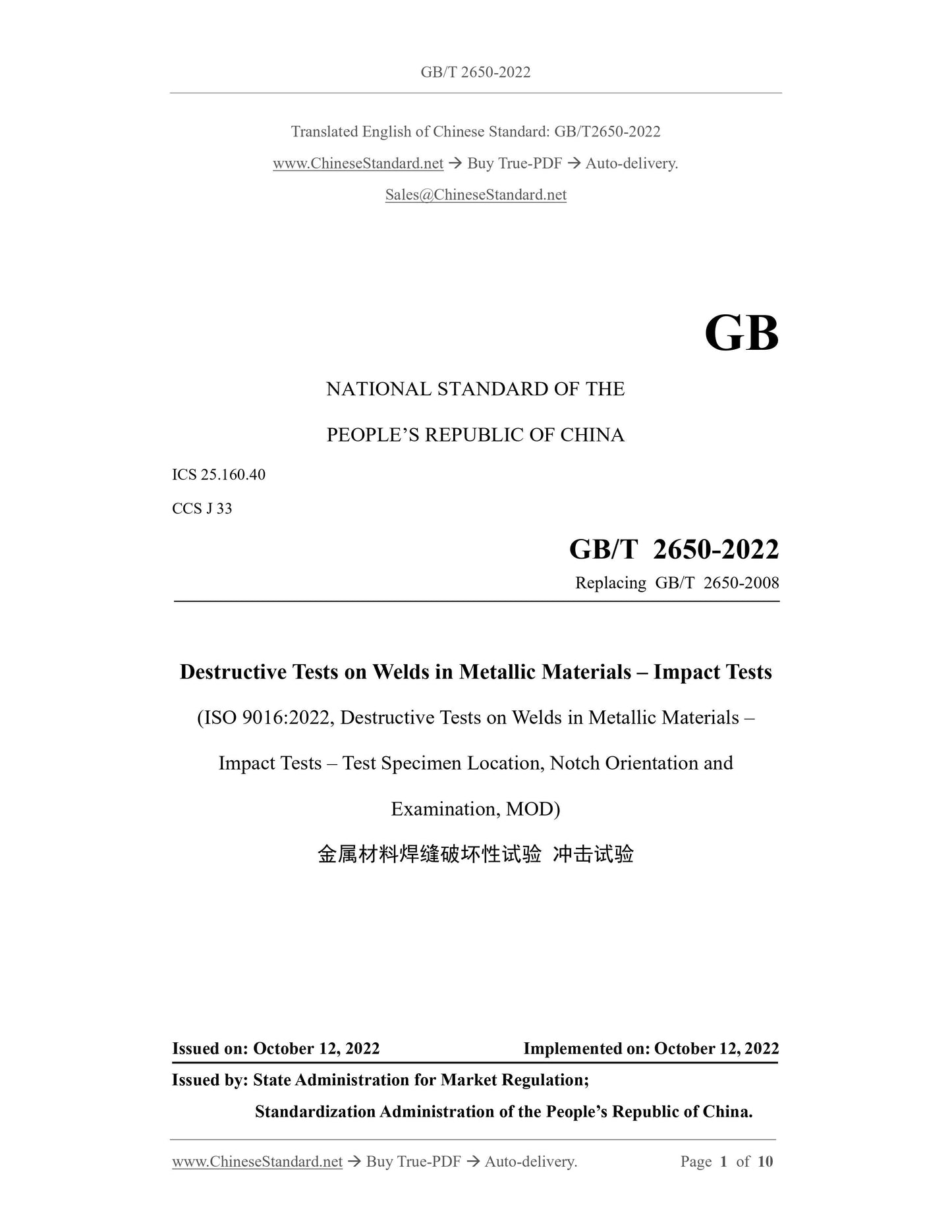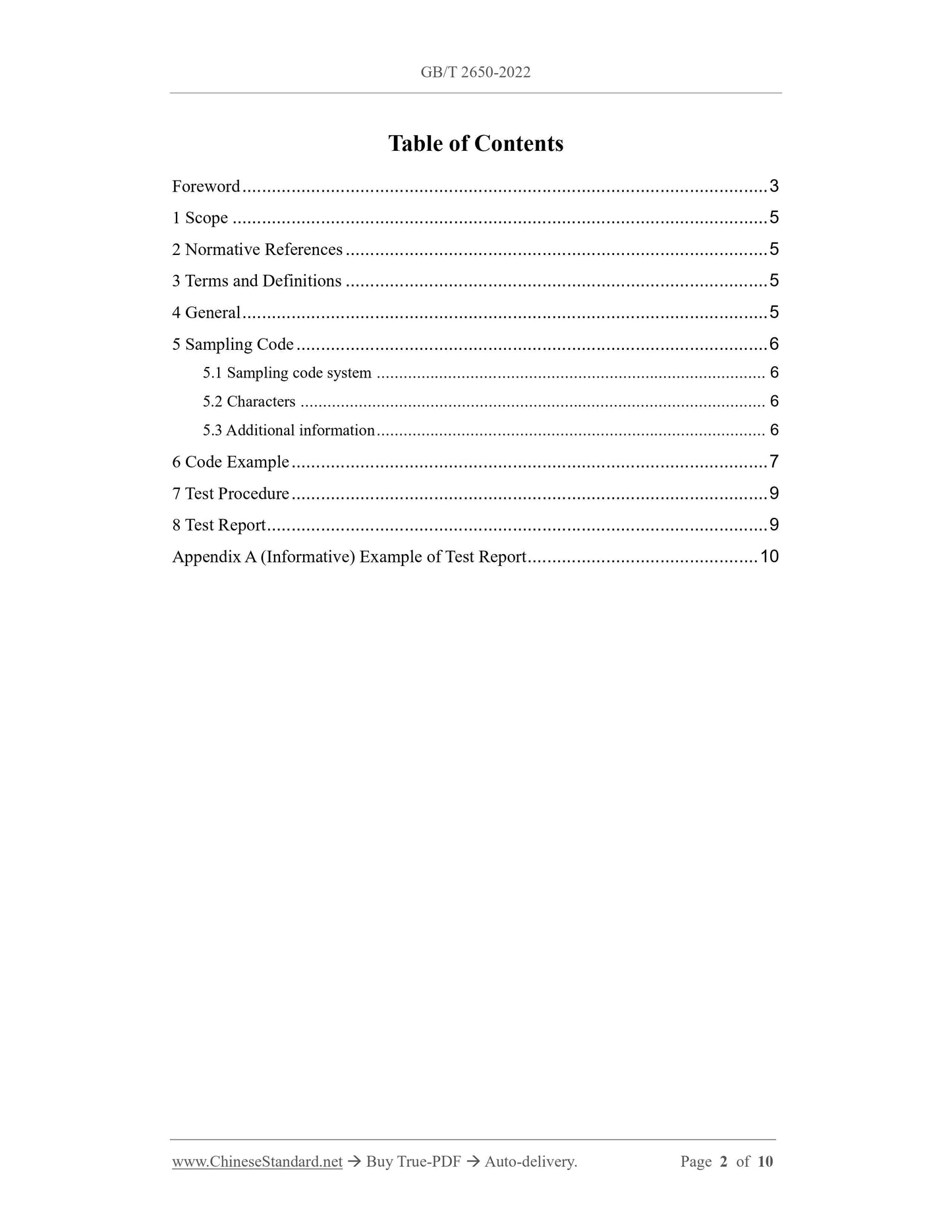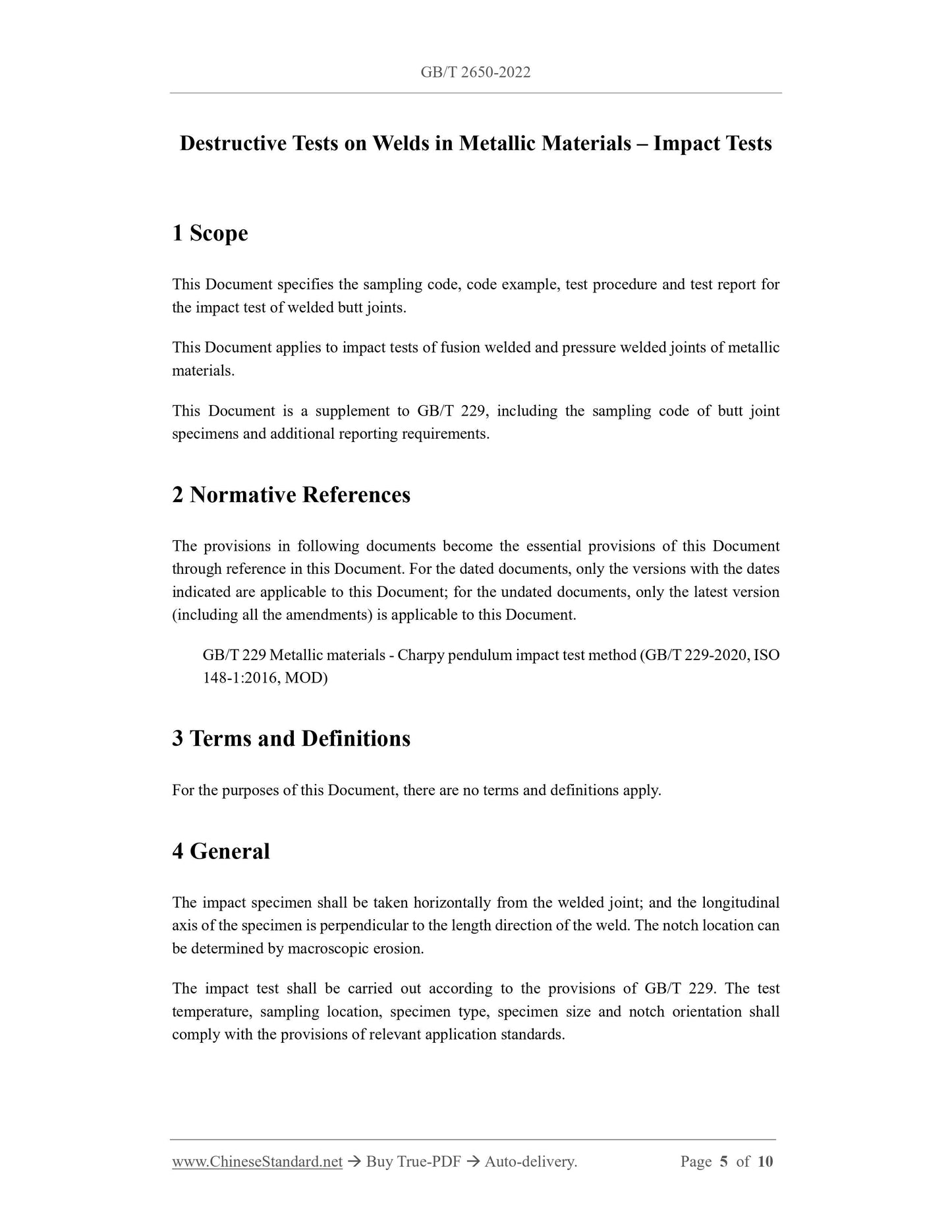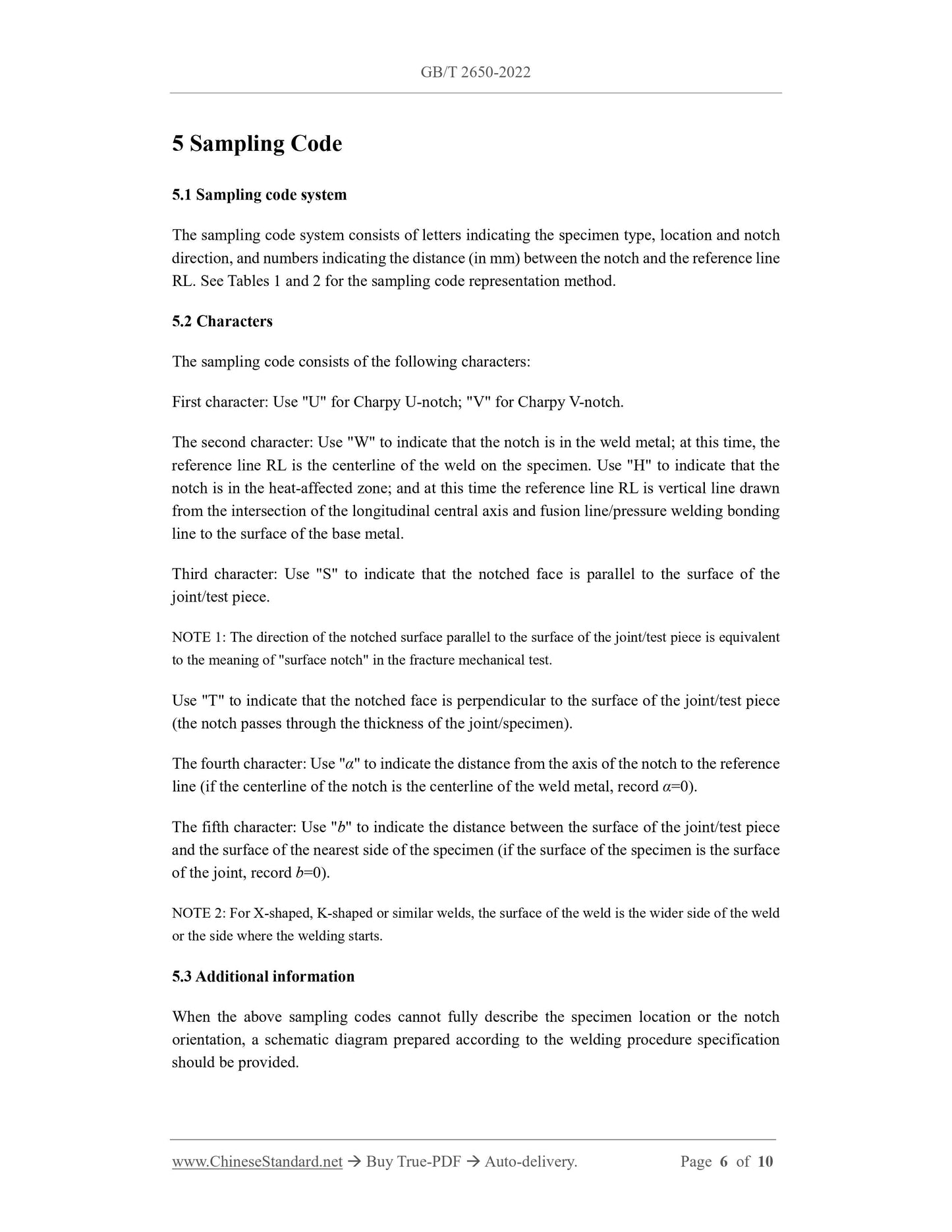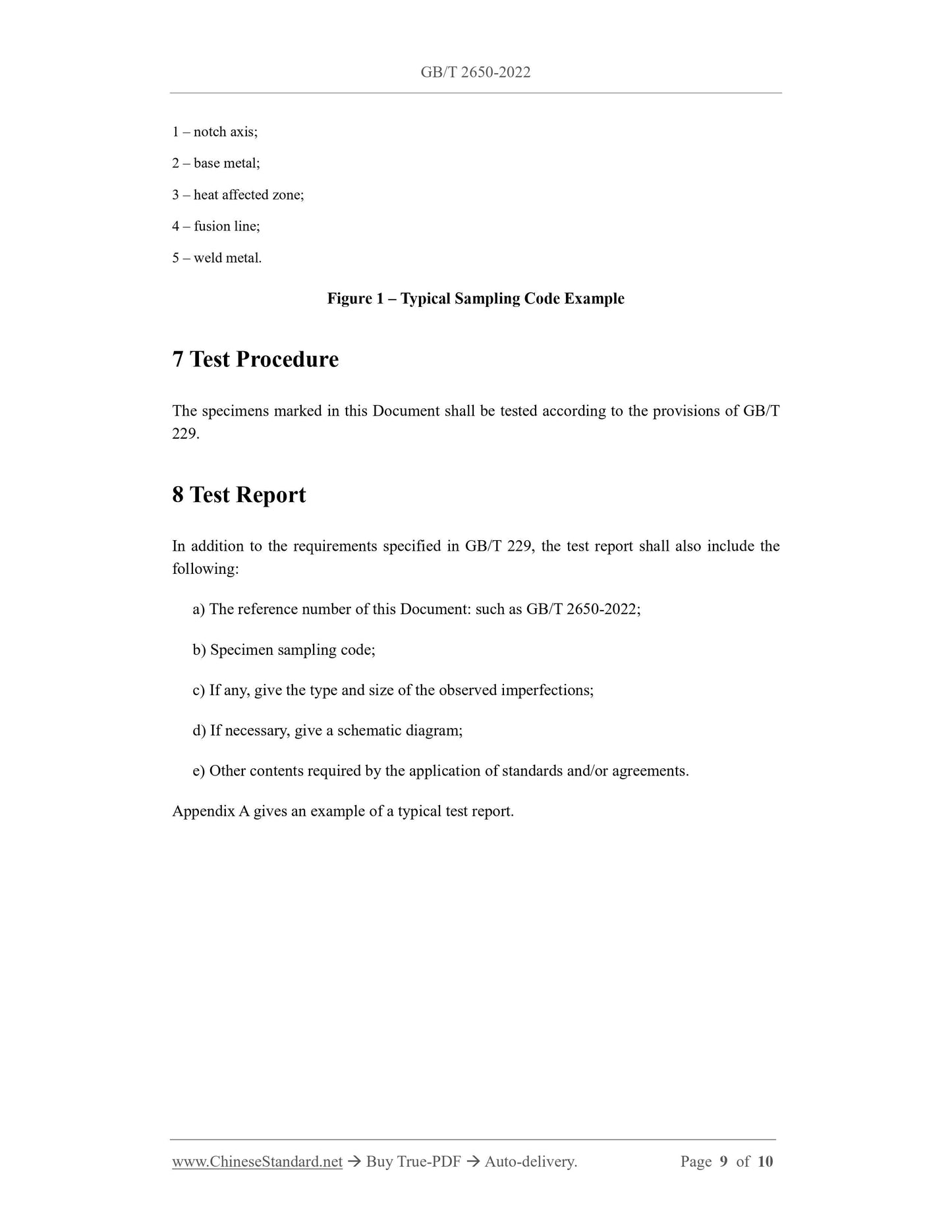1
/
of
5
www.ChineseStandard.us -- Field Test Asia Pte. Ltd.
GB/T 2650-2022 English PDF (GB/T2650-2022)
GB/T 2650-2022 English PDF (GB/T2650-2022)
Regular price
$125.00
Regular price
Sale price
$125.00
Unit price
/
per
Shipping calculated at checkout.
Couldn't load pickup availability
GB/T 2650-2022: Destructive tests on welds in metallic materials - Impact tests
Delivery: 9 seconds. Download (and Email) true-PDF + Invoice.Get Quotation: Click GB/T 2650-2022 (Self-service in 1-minute)
Newer / historical versions: GB/T 2650-2022
Preview True-PDF
Scope
This Document specifies the sampling code, code example, test procedure and test report forthe impact test of welded butt joints.
This Document applies to impact tests of fusion welded and pressure welded joints of metallic
materials.
This Document is a supplement to GB/T 229, including the sampling code of butt joint
specimens and additional reporting requirements.
Basic Data
| Standard ID | GB/T 2650-2022 (GB/T2650-2022) |
| Description (Translated English) | Destructive tests on welds in metallic materials - Impact tests |
| Sector / Industry | National Standard (Recommended) |
| Classification of Chinese Standard | J33 |
| Classification of International Standard | 25.160.40 |
| Word Count Estimation | 10,111 |
| Date of Issue | 2022-10-12 |
| Date of Implementation | 2022-10-12 |
| Older Standard (superseded by this standard) | GB/T 2650-2008 |
| Issuing agency(ies) | State Administration for Market Regulation, China National Standardization Administration |
Share
